Planting cosmos and caring for flowers in the open field
Many bright flowers growing in our gardens come from the American continent, as well as the modest beauty of the cosmeya. Planting such plants and caring for them in the open field does not differ in complexity. Cosmos, blooming all summer until autumn, were liked by gardeners, and they are often planted in flower beds.
Description
The plant has several names: kosmeya, cosmos, Mexican aster. In addition, in almost every region it has its own folk nicknames, which testifies to the popularity of the unpretentious and pretty flower.
A plant from the Astrov family is represented by three species: two annuals and a perennial.
Quite powerful, although thin and flexible, the stems of the cosmos can rise from 0.5 m to 1.5 m. Branches extend from the stem, on which numerous flowers are formed alternately. Openwork, thin, filamentous or dissected lanceolate (depending on the species) leaves are opposite. The type of inflorescence of the cosmos is a basket, 5-6 cm in diameter, in some varieties it reaches 12 cm. In general, the inflorescences are single, sometimes they form loose panicles.
In the center of the basket there are yellow tubular small flowers. The marginal flowers are ligulate, slightly toothed, of various shades of pink, as well as white, yellow and orange. The varieties with double baskets have been developed, in which the number of reed flowers increases. After flowering, the baskets are transformed into spiny boxes with gray-brown narrow and long, up to 1 cm, achenes. They ripen in late July or August. Kosmeya can multiply by self-sowing for 3-5 years and turn into a beautiful, harmless, rather fragile weed.
Advice
Cosmos fruits are not stored for a long time. Their germination is limited to two, sometimes three years.
Types and varieties
Two types of cosmos are widespread: double-feathery and sulfur-yellow, both annuals. Perennial kosmeya in our country is found in the pot culture. New varieties of cosme have been created: some are distinguished by their short stature, others by double flowers and variability in color. They require more diligent maintenance and fertile soil.
Double-feathery
In plants of this species, the leaves are threadlike, similar to the twigs of dill, the flowers grow separately, of a single type. The tubular central ones are yellow. Reed, which everyone calls petals, are purple, white, pink, red.
Cosmeas, terry and simple, delight flower growers with various varieties.
- Rainbow overflow - tall plants, up to 1.2 m, with large double flowers of characteristic raspberry, burgundy or white shades.
- Sensation - the plant is tall, more than a meter, flowers are simple, but large. Red, white, pink, even with contrasting edging.
- Double Click Rose Bon-Bon - a tall plant, about 120 cm. Flowers 10-12 cm in diameter, double and semi-double, pink shades, in the shade acquire a lilac tone of petals. They are stored for a long time in bouquets.
- Diablo - stem height 60-80 cm, flowers 10-12 cm, rich red tone.
- Sonata (White or Pink) - undersized varieties, up to 0.5 m. The petals are not only white, but also pink, crimson shades, sometimes with edging in a contrasting color. Baskets reach 10-12 cm in diameter.
- Antiquity - a compact plant, does not exceed 50 cm. The opening double flowers have a dense red tint, which gradually turns into salmon. Towards the center of the flower, the color is more intense.
- Vega - dwarf cosme, bred for cold regions.Plant height - up to 30 cm, flowers - from 7 to 10 cm, pink, red, white.
- Dezzler - short, up to 50 cm, plant with bright red flowers, over time they turn crimson.
Sulfur yellow
In sulfur-yellow cosmos, the leaf blade is wider, somewhat vaguely resembles the leaves of marigolds. Ligulate flowers of yellow-orange shades. This species is thermophilic.
- Brightness blooms profusely and for a long time, double baskets, bright, orange, almost red.
- Bilbo is 50 cm high, with small, 4-5 cm, semi-double orange flowers.
- The ladybug is a compact bush that does not rise above 30 cm. Semi-double flowers of a warm range - from yellow to deep orange.
Perennial
Perennial kosmeya is low, it has a rich dark red hue. It is called chocolate for the faint notes of this delicacy in a floral scent. In our latitudes, it is grown as a flowerpot flower. The plant is brought into a warm room for the winter or carefully covered.
Significance in garden design
A variety of shades of cosmos can make any garden corner pleasant and fun. Due to its unpretentiousness, this plant is planted not only in the sun, but in partial shade, and in shaded places. Cosmos bloom from early summer until frost. Tall varieties will decorate a fence or an unsightly wall of buildings. Stunted ones will create a magnificent curb, they are planted in flower beds and in containers. Kosmeya is harmoniously combined with chamomiles, marigolds, phlox, all types of carnations.
Advice
By planting all the colorful plants together, you can lose the original color, since cosmos of the same species are pollinated among themselves. The best way out is to purchase seeds from trusted firms every year.
When are flowers planted and sown?
Kosmeya propagates by seeds, which are sown directly into the ground in the spring in the southern regions. In areas with harsh natural conditions, the culture is grown in seedlings. When planting seedlings or sowing seeds, a distance of 30-35 cm is maintained between the holes.
Planting seedlings
Cultivation of cosmos from seeds for seedlings begins in the last days of March or in April. After planting in a flower bed in May or early June, kosmeya will bloom in 4-5 weeks.
- The seeds are spread on a damp substrate. They compact the soil by gently pressing the seeds without burying them. The container is covered with glass or foil and placed in a warm place for germination.
- Shoots are visible in a week or 10 days. They must be supplemented so that the tender sprouts do not stretch up. Watering is moderate.
- After the appearance of 2-3 leaves, the sprouts of the cosmos dive and transplant into separate cups or pots. You can sow seeds in separate containers so as not to dive.
- Seedlings are provided with a low temperature, up to 18 degrees.
- In open ground, the planting of cosmos is carried out after the establishment of warm weather - by this time the seedlings have already regrowed to 5-6 cm.
- They dig spacious holes 30-35 cm deep, watered, planted a plant with a lump of earth neatly from a pot, covered with soil.
Sowing in a flower bed
For the cosmos, they choose a site protected from strong winds. Supports are provided for tall varieties. Cosme seeds are sown in open ground after the snow melts. They are deepened by 0.5-1 cm. Plants will bloom by the end of July or in August.
Advice
Tall cosmos, which have risen to the 50 cm mark, pinch. The bushes from this become more lush.
Care
Undemanding cosmos will take a minimum of time from the grower.
Plants are regularly watered - every week, if there is not enough natural precipitation - 5-6 liters at the root. The next day after watering, the soil is loosened, preventing the formation of a crust.
Plants are fed for a more luxurious flowering by any fertilizers for flowering plants in the open field.
- The first feeding is carried out two weeks after planting the seedlings or when the plants reach 10-15 cm.
- The second time kosmeya is fertilized when laying buds.You can apply foliar feeding of the plant with the "Bud" preparation.
- The next top dressing is during flowering.
Advice
Cosmos will form new and new buds if faded baskets are constantly removed.
After flowering, chocolate kosmeya is cut off in the fall, leaving 15-centimeter stems, transplanted into a large container and brought into the room. If the plant hibernates in the open field, it is mulched and covered.
Kosmeya practically does not get sick. In case of possible infection with fungal diseases, which can occur when the plantings are thickened, the plant is removed. On the cosmos, lacewings like to live that feed on aphids, thus cleaning the plants. Against slugs, you can scatter wood ash on the soil - it will simultaneously provide nutrients to the plant and prevent the movement of gastropods.
How to collect seeds?
Kosmeya quickly forms its seeds, and growers often do not have time to collect them. The seeds are detached from the basket and fall to the ground. To prevent such self-seeding, gauze bags are put on the maturing baskets selected for collecting seeds.
Advice
If the seeds germinate next year, the sprouts can be transplanted to another location. The plant will be as beautiful as the previous year. But it is possible to change the degree of terry and shade of color.
It is always pleasant to relax next to the cosmos. Beautiful flowers transform the look of the garden, giving it a light, relaxed look. And all this splendor does not require much effort - even a beginner can plant and grow cosmea.
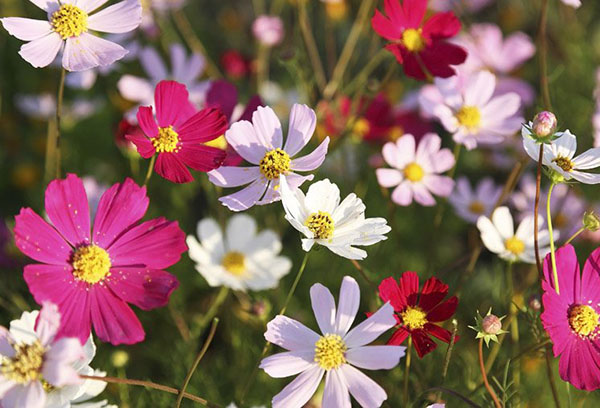
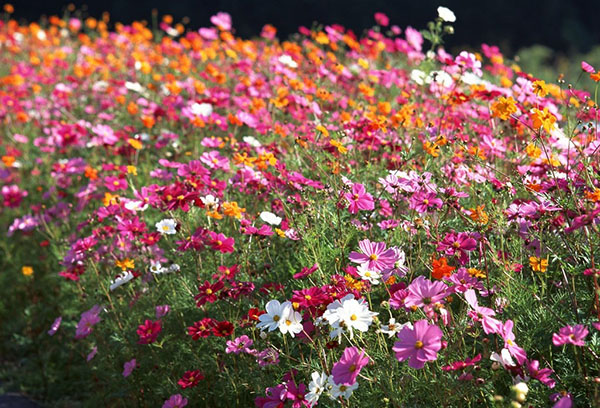
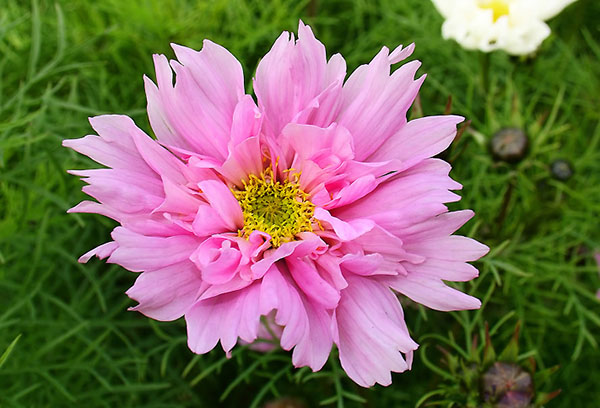
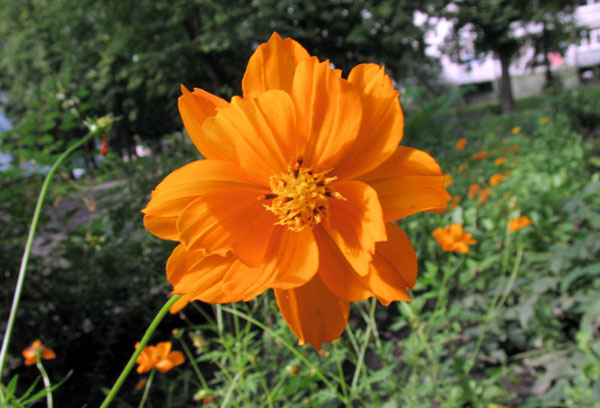
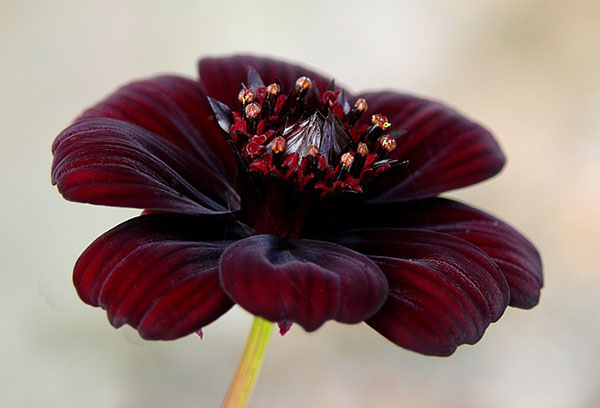

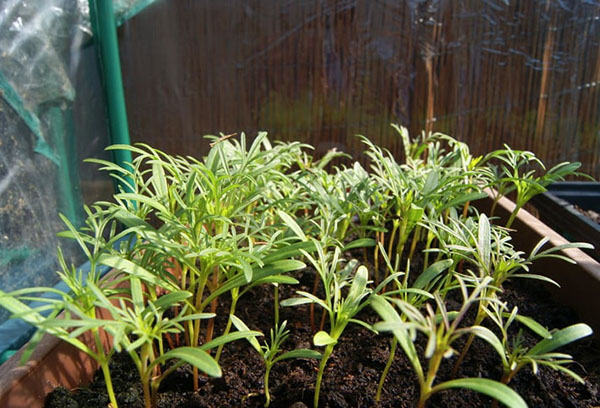
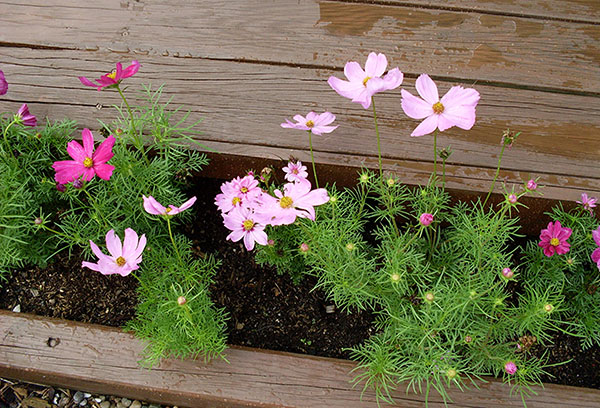
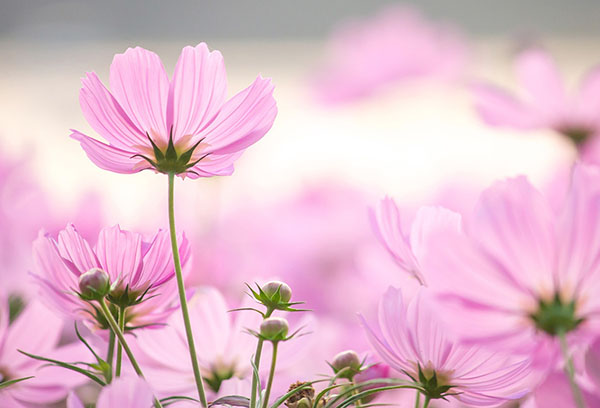

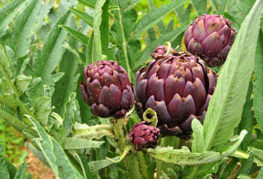
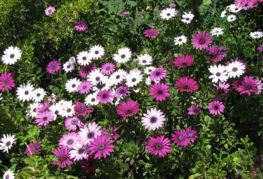
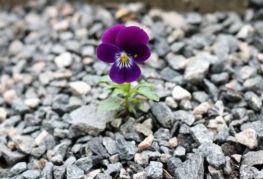
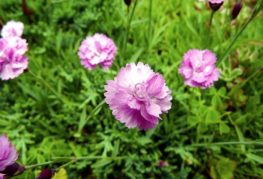


and will be published shortly.